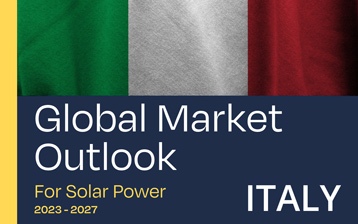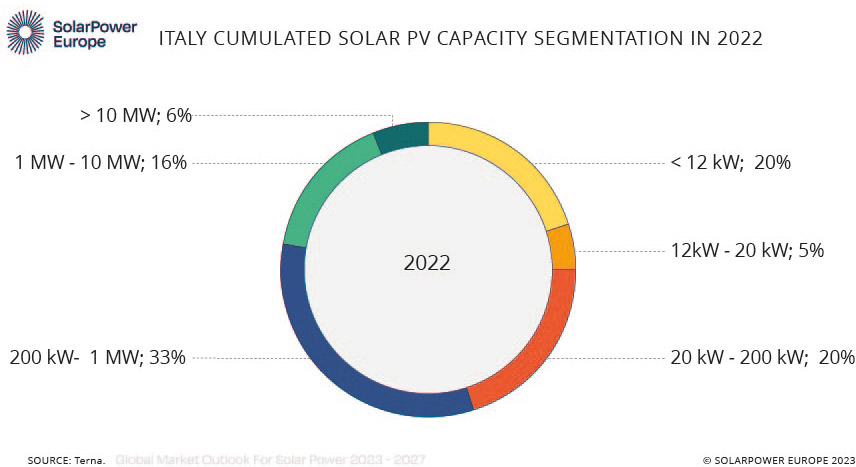The photovoltaic sector in Italy between 2014 and 2021 grew slowly with an average capacity of 500 MW installed per year.
In 2022, thanks to the State Superbonus 110% incentive, the growth of installed photovoltaics reached a cumulative capacity of about 25 GW, with more than 1.2 million photovoltaic systems totalling about 2.48 GW, of which 1.1 GW are residential systems.
Commercial and industrial installations also reached a significant share of 8.27 GW, 33% of installations.
The regions with the highest installed capacity are Apulia, Lombardy and Emilia-Romagna, while those with the lowest installed capacity are Valle d’Aosta, Liguria and Molise.
Perspectives and growth suggestions
The Italian industry associations ANIE Rinnovabili, Elettricità Futura and Italia Solare predict that in order to reach the EU 2030 targets presented in the Fit for 55 and REPowerEU package, aimed at accelerating the transition to clean energy, Italy will have to install at least 85 GW of new capacity from new renewable sources by 2030, of which 58 GW from solar PV.
This scenario will require EUR 320 billion of total investment in the electricity sector and supply chain, with an indicative economic benefit of EUR 360 billion.
In order to reach the target set by the EU, Italy will need to overcome some obstacles and implement specific activities by the authorities to stimulate investments in the photovoltaic sector.
In particular, the handling of authorisations for large-scale solar projects remains a crucial challenge, along with the identification of suitable areas for plant construction for which support from individual regions should be sought.
The following actions were identified that should be taken urgently to foster further solar growth:
- Simplify authorisation procedures for new plants and repowering projects
- Set up measures to support energy communities and self-consumption
- Incentivise storage systems in all market segments
- Plan long-term strategies to avoid regulatory disruptions or sudden legislative changes that destabilise market players’ plans
- Finalise legislation for the development of agri-voltaic systems
- Facilitate the transfer of energy produced by photovoltaics and other FER systems to consumers
- Strengthen the European PV and BESS technology supply chain for better energy resilience and decreased dependence on non-EU countries
Prospects for the sector 2023-2026
By 2026, Italy is expected to install about 39 GW of new RES capacity, with about 27 GW of PV. This is equivalent to an average annual growth of more than 6.5 GW for the period 2023-2026.
Considering that in 2023 in the first 9 months of the year the connected capacity was 3.55 GW and the final estimate will not reach 5 GW, a significant growth is hoped for the period 2024-2026 in order to reach the targets.
In fact, in 2023 there was a significant drop in residential installations due to the elimination of the 110% Superbonus subsidy, while the C&I segment saw a strong increase.







